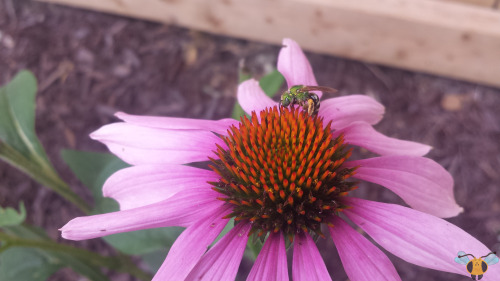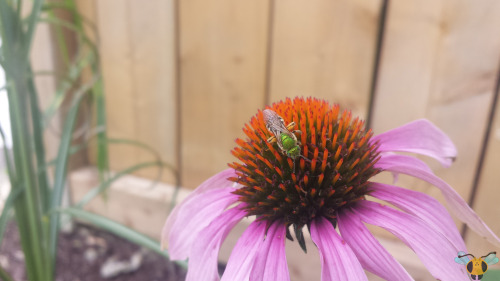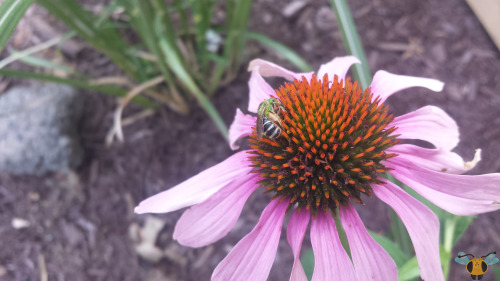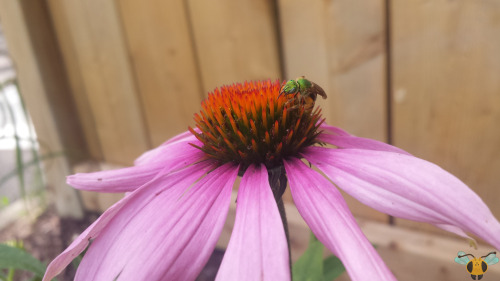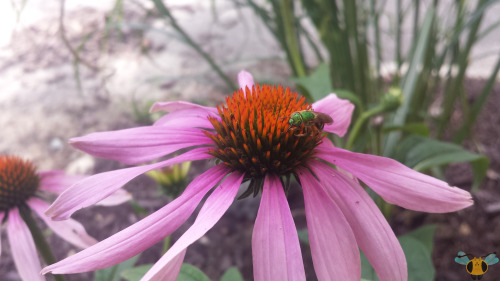#bicolored striped sweat bee
Bicolored Striped-Sweat Bee - Agapostemon virescens
MostBees are associated with colors like yellow and black, but they come in an even wider array of colors than one could possibly imagine. There are even tropical Bees that are bright blue, purple, white and even some with traces of red (which may or may not be a Red Belt! Today and Friday, this blog will showcase two particular green colored Bees which at first glance may resemble the fabled Jewel Wasp, but are in fact, well, Bees! Look at that little face. That is the face of a Bee from the family Halictidae, better known as Sweat Bees due to their attraction to sweat from the human body. Sweat is a valuable source of salt for them, so an opportunity like this is too great ignore. Fear not, the female’s sting isn’t very powerful, so even if you consider them a nuisance, they present no real threat to you if you’re walking in the park. In fact, letting one land on you may present a valuable opportunity to observe them in action.
It’s best to note that you shouldn’t count on them landing on you if you actively seek them out as these insects are very skittish and eager to escape. Better to sit down after some physical activity and let them come to you. Aside from their diet of sweat, these Bees do as most others do and supplement their diet using nectar and pollen from a wide variety of flowers. This individual has a lot of surface area to cover on this echinacea flower, but plenty to feast on as a result. Female Bicolored Bees need to gather what they can to provision their nests and the larvae within. Like Digger Wasps, they too nest in the ground and have cells that contain larvae, but unlike those predator insects, these diligent Bees line the cells with gathered pollen instead of paralyzed insects or spiders. Quite the little ecological niche they have. As well, while the aforementioned Digger Wasps are solitary hunters, Sweat Bees such as this one may join forces and cooperate socially within a single burrow. It’s not quite an insect colony in terms of structure (i.e. no castes or honey to be made), but a few individuals working together may be all in the difference in the world, especially when hunting for food is not an option.
Pictures were taken on June 26, 2018 with a Samsung Galaxy S4. On Friday, other specie of Agapostemon Bee that calls Ontario home!
Post link

Bicolored Striped Sweat Bee
Pine Creek Barrens, KY
16 June 2021

Bug of the Day
A tiny sweat bee on clover, from the archives (June 2005). Yes, that’s right, I have been photographing bugs longer than some of you have been alive…

